Top tips from experts on transitions and routines
Routines help to create regularity in the child's life. How can we ensure that going from brushing teeth to packing a bag is hassle-free?
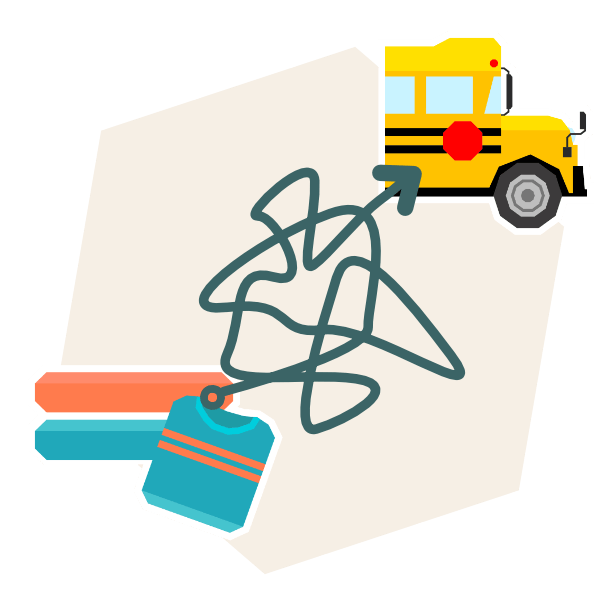
Chapitre 5
Transitions and routine
Routines and transitions are an integral part of our daily lives, both for children and adults. They are all the moments in our lives that surround our leisure time and work and that are repeated regularly.
For children, these moments are key because they create regularity in the child's life. These moments occur on a daily basis, unless there are special days. And that's why children sometimes seem a bit more excited and febrile on special days.

The absence of a nap, for example, is not only a lack of sleep, but also a change in the daily routine that affects the child. Before going any further, however, it is worth defining what a transition and a routine are.
What is a transition?
A transition is a moment between two actions. For example, between indoor and outdoor play, getting dressed is a transition. When you move from the living room to the dining table for a meal or to do your homework, that is also a transition.
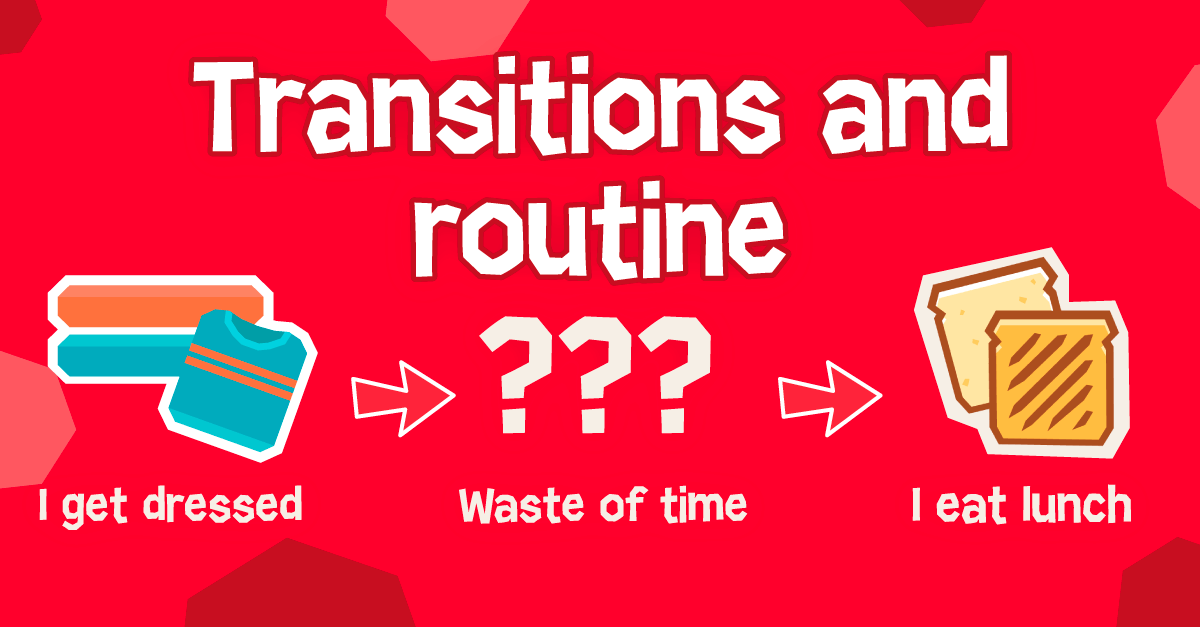
Sometimes transitions are short. For example, if we do a puzzle at the table and simply move it to eat. On the other hand, the moments when you have to tidy up for a long time, get dressed, go to the bathroom, etc. are longer. These are also the moments that are most likely to cause problems.
What is a routine?
Routines, on the other hand, are actions that are repeated daily and are not periods of leisure. Eating, sleeping, going to the toilet... These moments are sometimes problematic because the child is first asked to stop playing, to then perform actions that they might not particularly like.
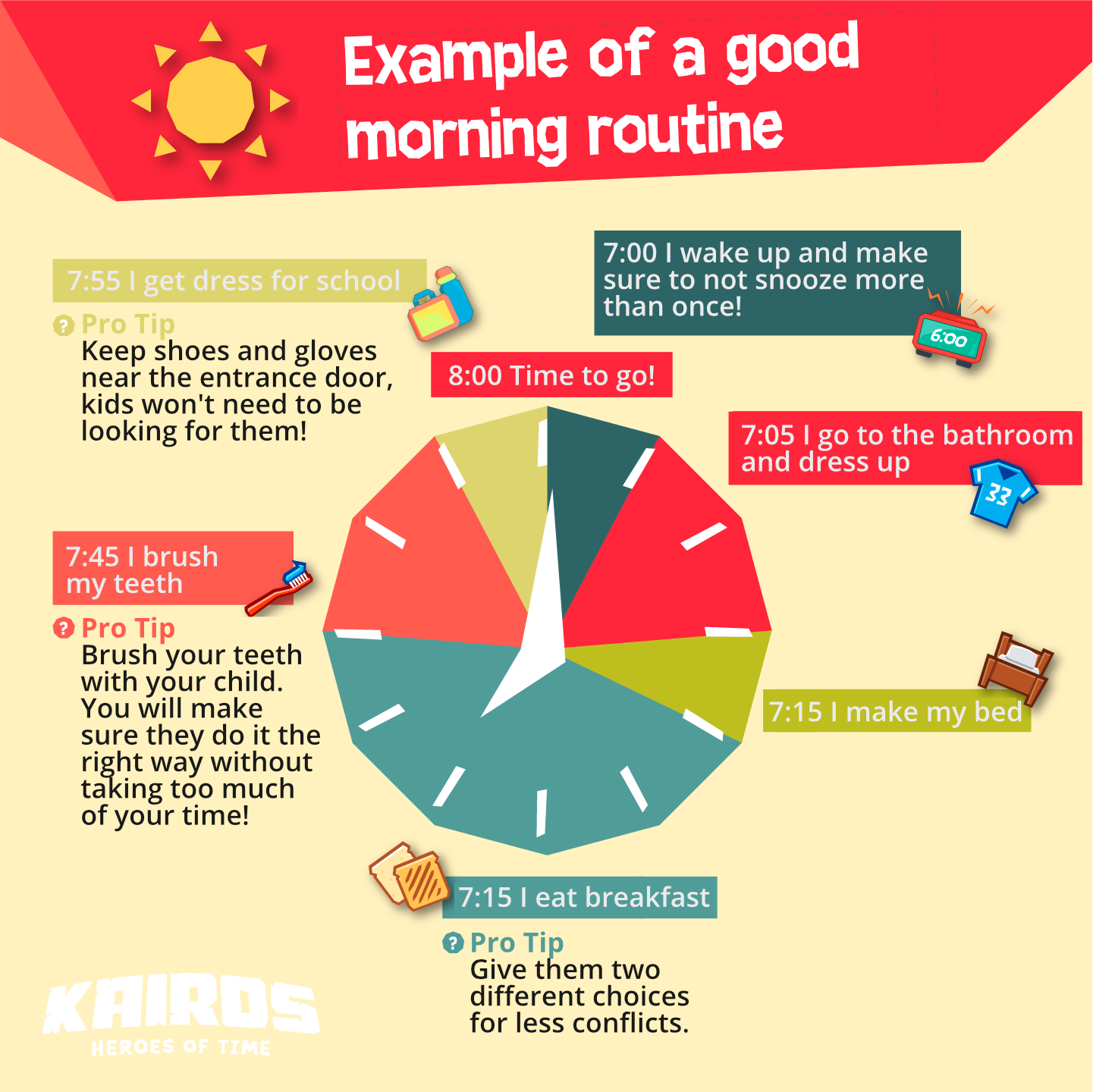
You can learn more about the best tips for building a routine in Chapter 2 of this guide.
Bedtime routine: routine or transition?
The bedtime routine is a routine and a transition. In fact, sleeping is a routine, but all the actions we do beforehand are part of the transition from day to sleep.

This moment is particularly important because it sets the mood. In the same way that you turn on the lights to eat, you need to create a relaxed atmosphere. A song, a story, dimmed lights, no screen. This not only relaxes the child, but also sends a message to the brain that it is time to go to sleep. The routine, if it is always the same, will therefore make it easier to fall asleep.
How can transitions be made easier?
First, we need to create stability in our schedules. Without realising it, even we adults have a schedule and a routine. We do certain things in a logical sequence. It is the same for the child, he needs a logical sequence.
So if I ask you to stop for a moment and think about the times when your child gets to choose, there will certainly be very few. We choose for children what they eat, what we do for the day, what they wear as clothes... So they have no certainty about these events. They need to anticipate certain things. Even the vast majority. Even better, build your routines with them! They will feel much more involved in the process and they will know what to expect.
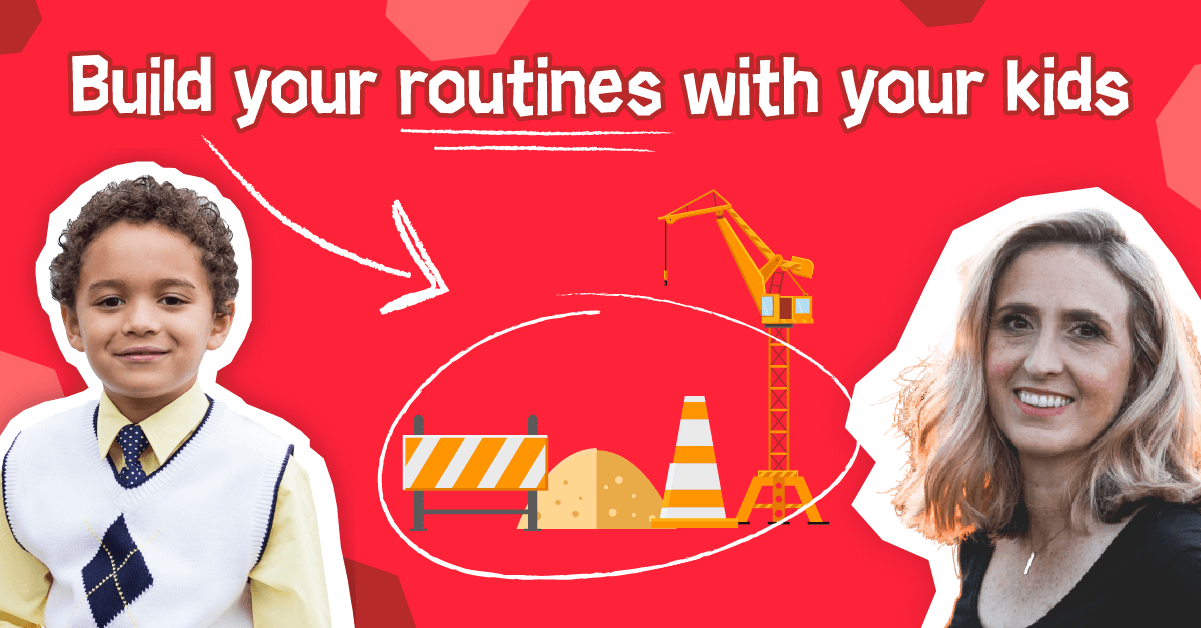
Let's take a concrete example. A pandemic, for example. Adults find themselves, overnight, losing all their bearings and certainties. Their entire routine is turned upside down. Now imagine that someone, a human, superior to you, decides to disrupt your routine every day. Just like that! To make a change!
So, it is important to have transitions and routines that repeat themselves one day after the other, with as much predictability as possible. In terms of tasks, a similar template is kept. The planned tasks are the same from day to day, with as much predictability as you can.
A good idea to help the child predict the routine is to make it available for your children to see. If you use Kairos, your children have access to their routines in the Children's section, and you in the Parent's section. That way you don't have to constantly remind them. Alternatively, post your routine chart somewhere visible to you and your children!
Finally, to make transitions easier, make them fun. With younger children, we go into the imagination. You move around the house as a spy. And you arrive at a steak, peas and mashed potatoes that you have to fight!
Particularities of certain types of children
For some children, this stability and predictability are even more important. Therefore, it will be necessary to redouble efforts to create a stable and secure environment. Here are some ways to facilitate these moments:
ADHD children and transition
First, it is important to understand that our brains work with multiple communication channels. A child living with ADHD (as well as an adult!) is more likely to process information from two communication channels. So touching the child's shoulder and telling them what to do next can help make the task easier to perform.
Another idea is to give the child an object related to what he or she is going to do. For example, to prevent them from going to the bathroom and forgetting they are going to brush their teeth, putting the toothbrush in their hands helps. Visual guides such as a routine chart or routine pictograms can also help your child.
Also, having them repeat the instruction: "When you get home, take off your boots and get ready to eat! What do you do when you get home?" and looking them in the eye are actions that help them absorb the information. Saying in a few words what is expected of them is also a good way to go. A short, clear instruction is less likely to be forgotten or not understood.

For a child living with ADHD, it is even more important to have a stable and visual routine. A routine board or the Kairos application can help him to concentrate. That way, if he forgets the next step, he can refer back to it. And, rather than getting angry, we ask, "Well done, you've taken your boots off. What should you do next?”
Finally, create a ritual that consistently recurs around transitional and routine tasks. For example, have the child wash their hands, fill their own glass of water and then sit at the table. Or that the story is always before the pyjamas and brushing the teeth. This creates reminders in the brain.
ASD
Children living with ASD particularly like regular and repetitive activities. Changes of any kind destabilize them. Thus, not only shall we aim at maintaining routines as usual, but we should also inform the kid of what is going to happen, so that it becomes predictable for them.
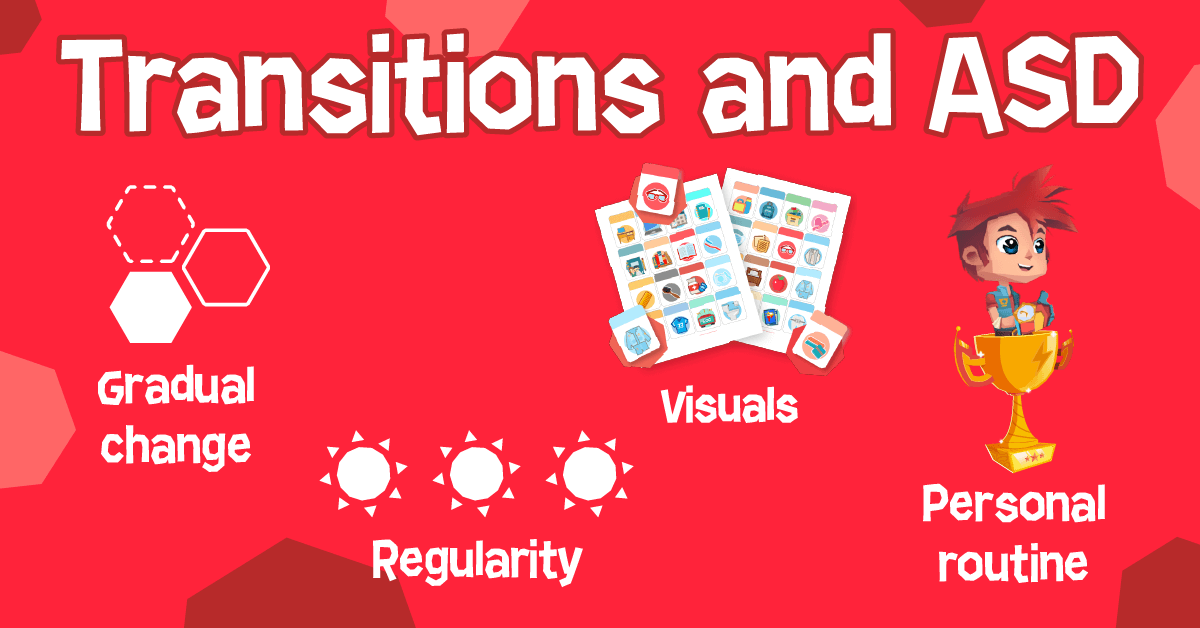
For this purpose, it is recommended to have a visual of the routine. For example, in the form of pictograms or a schedule of the day. If the child has it within reach, he or she can look at it and plan what is coming up.
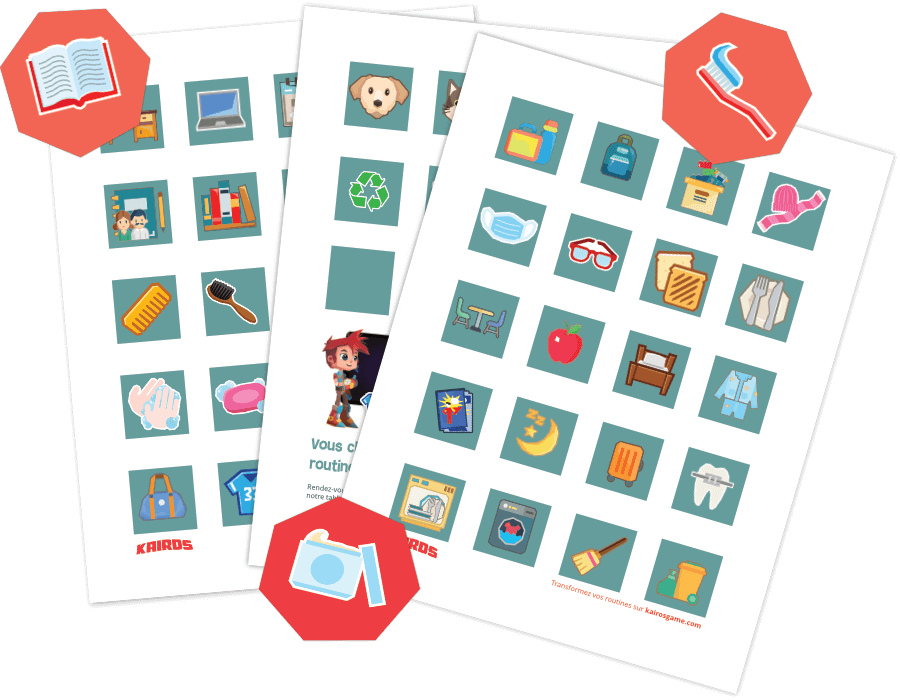
Also, changes should be made gradually, with time to adjust between each one. Explaining them well in advance is also a good way to prepare the child.
All of these are only exploratory paths. What is most relevant is to find a routine that fits your family lifestyle. Because a routine that doesn't fit well into your daily life will become chaotic and the family atmosphere will be tainted. So gradually try to establish a routine that fits you. You probably already have a routine in place; all you have to do is write it down (or put it in Kairos!) to make it happen.
The problem is still not solved? These strategies will definitely help
You have put solutions in place to improve transitions, but it's still complicated? The next section deals with the obstacles to the routine. For each obstacle, we suggest strategies you can try today to overcome it! Check it out.
Read more:
On the importance of routines for children: https://naitreetgrandir.com/fr/etape/1_3_ans/viefamille/fiche.aspx?doc=importance-routine-enfant (only in French)
Example of a checklist for the child with ADHD: http://www.attentiondeficit-info.com/pdf/routines-journee-memos.pdf
Tips and strategies for ADHD: https://educationspecialisee.ca/wp-content/uploads/2018/02/TDAH-ReferenceOPTIMA.pdf
Routines and Rituals for People with ASD: https://spectredelautisme.com/particularites-autisme-tsa/routines-rituels-autisme-tsa/
A book for a child care setting, but with lots of ideas for routines: Malenfant, Nicole. Routines and transitions in educational services: in CPE, daycare, SGMS, preschool and kindergarten. Canada: Presses de l'Université Laval, 2006.